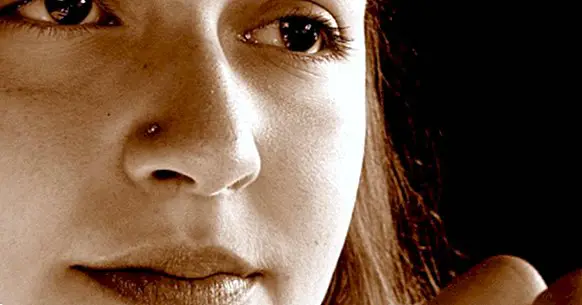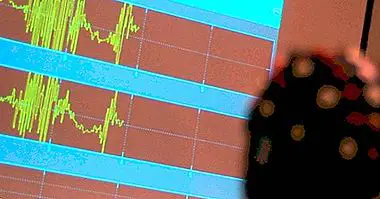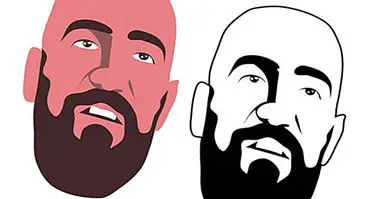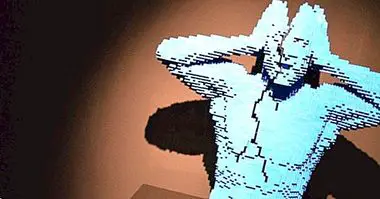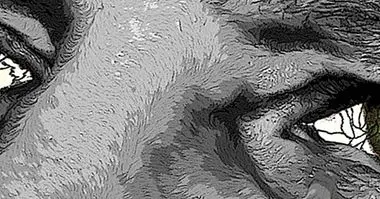Pure obsessive-compulsive disorder: symptoms and treatments
When we think about the symptoms of an obsessive-compulsive disorder (OCD), we usually focus on those that are more typical of this disorder. Like the constant cleaning or the excessive need for order. However, not all OCDs manifest in the same way.
Although compulsions are a very important aspect of this condition, there are cases in which people experience the obsessions without even manifesting any type of compulsion. That is, no type of visible behavioral symptom. This subtype of OCD is known as pure obsessive compulsive disorder .
- Related article: "The 12 types of obsessions (symptoms and characteristics)"
What is pure obsessive-compulsive disorder?
Pure obsessive-compulsive disorder is a subtype of OCD characterized by the presence of thoughts (obsessions) that appear in the mind of the person in a repetitive, intrusive and uncontrollable way .
Unlike traditional OCD, the person who suffers from this type of condition does not engage in rituals or visible physical behaviors (compulsions) related to obsessions, so these are accompanied by hidden mental rituals.
Pure obsessive-compulsive disorder has been mistakenly considered a less severe variant of OCD. However, those people who experience the symptoms of this condition report that intrusive thoughts can be extremely annoying and anguishing .
Although these people are diagnosed with pure obsessive-compulsive disorder, this variant does not appear in the Diagnostic and Statistical Manual of Mental Disorders (DSM-V) as a separate diagnostic label or different from traditional OCD.
- Perhaps you are interested: "Obsessive-Compulsive Disorder (OCD): what is it and how does it manifest?"
What symptomatology does it present?
People suffering from the exclusively obsessive-compulsive disorder of obsessive-compulsive disorder experience a wide range of symptoms of OCD, although Obvious or visible compulsions through behavior are absent .
To better understand what this disorder consists of, we will make a brief review of the symptoms of a clinical picture of OCD. According to the DSM-V, the toc is characterized by the presence of obsessions and compulsions.
The person can experience the obsessions in the form of intrusive and repetitive images and thoughts. The content of these thoughts may be focused on somatic, sexual, religious or aggressive themes; as well as in issues related to control, symmetry, cleanliness or hygiene and organization , among many others.
As a result of these obsessive thoughts, the person feels the need to carry out a series of repetitive actions known as compulsions. These actions can be behavioral or mental, as in the case of pure obsessive compulsive disorder, and are intended to reduce the anguish caused by obsessions.
Once we know these we can ask ourselves, what symptoms then characterize pure obsessive compulsive disorder? There are two specific symptoms that can be used to distinguish a pure TOC from a traditional one. These symptoms they are materialized in the presence of mental rituals and in the constant search for consolation .
1. Mental rituals
In pure obsessive-compulsive disorder, the person performs a series of mental rituals designed to reduce distress. Such rituals can include constant mental review of memories or information , the mental repetition of words or undo and mentally do certain actions.
2. Search for constant comfort
In addition to mental compulsions, these people tend to seek comfort repeatedly and constantly. However, patients do not recognize this behavior as a compulsion.
Such behavior can imply a need and search for security in oneself, constantly avoid objects or situations that provoke anxiety and demand safety from other people.
An added complication of this symptom is that People close to the patient may not understand these behaviors and interpret these demands as needs, not as symptoms of a disorder, so they may get tired or bothered by these constant requests for comfort
Some studies with people diagnosed with pure obsessive-compulsive disorder found that these people they considered obsessive thoughts as taboo or unacceptable thoughts .
Finally, we can conclude that compulsions appear in this variant of OCD, but that they take a different form than in the traditional diagnosis and, in addition, they are much less obvious because of the cognitive nature of these .
Is it, therefore, a different variant of the TOC?
While it is true that some research points to the possibility that there are different forms of OCD, others suggest that the term "pure" is inappropriate. The reason is that people who experience these obsessions without visible behavioral compulsions, yes they participate in hidden mental rituals .
According to these studies, the recognition of these mental rituals as compulsions is very important, since it can be helpful when making a diagnosis and treatment more adjusted.
By understanding that such rituals exist, therapists and mental health professionals can ask patients for these symptoms. Without such inquiries patients can try to hide them or even not be really aware of their existence.
Is there a treatment?
Treatments for obsessive-compulsive disorder, including its "pure" variant, usually involve the administration of drugs in combination with psychological therapy , support groups and psychological education.
1. Psychological intervention
Traditionally, it has been considered that cognitive-behavioral therapy is the most effective treatment for the TOC. However, in pure OCD it is of vital importance that the therapist understands the need to also address the underlying mental rituals.
On the other hand, if you consider that the patient only experiences obsessions, the treatment will not be really complete and effective.
- Maybe you're interested: "Types of psychological therapies"
2. Pharmacological therapy
Regarding pharmacological therapy, among the medications indicated for the treatment of OCD are included Selective serotonin reuptake inhibitors (SSRIs) or tricyclic antidepressants such as clomipramine.
The choice of pharmacological treatment will depend on the condition of the patient as well as the patient's disposition and collaboration in cognitive therapy.

